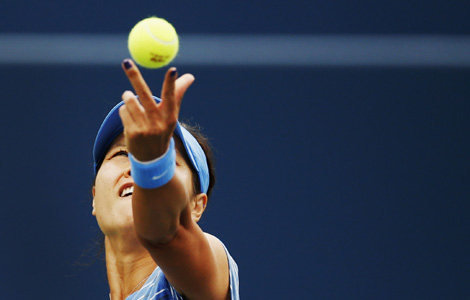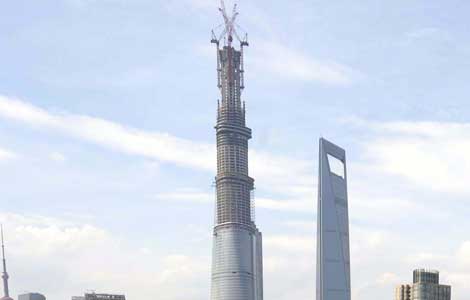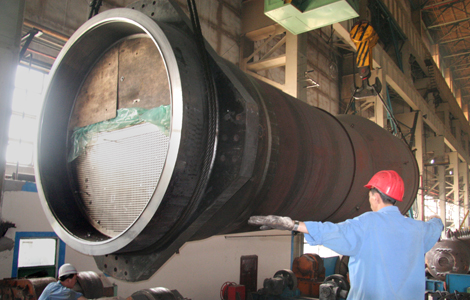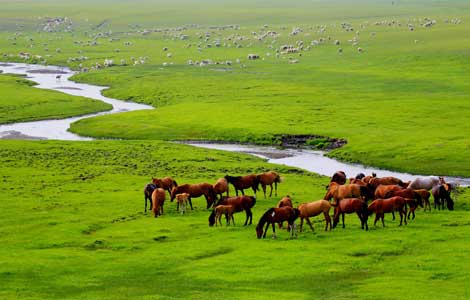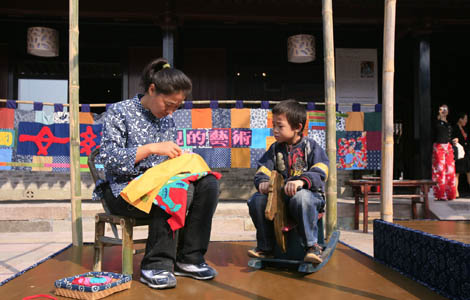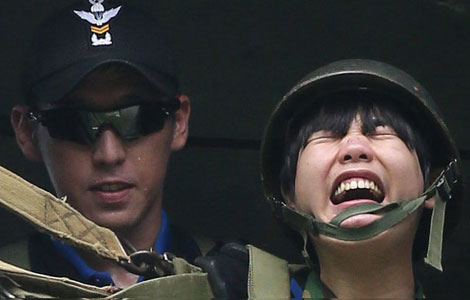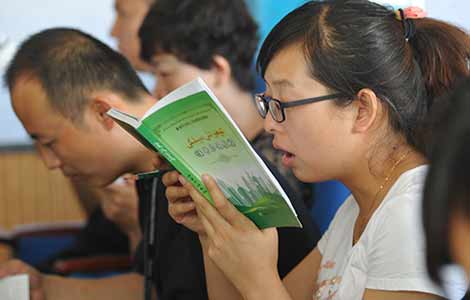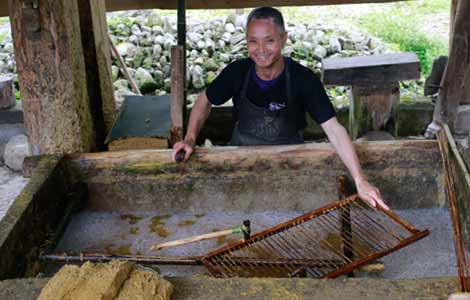Flight or Fight: Miyazaki vs Aso
Updated: 2013-08-08 08:11
By Philip J. Cunningham (China Daily)
|
||||||||
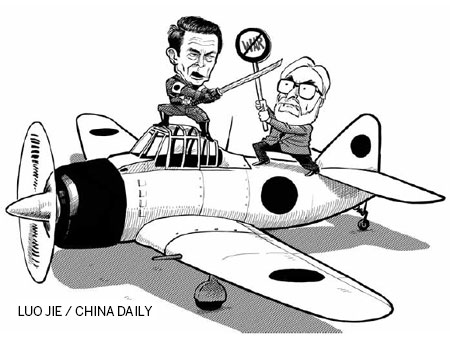
Unresolved issues of history continue to haunt and distort the present, all the more so when hidden from view. Historical controversies need a good airing from time to time, not so much to salvage the past as to save the future from repetition of past mistakes. When factual distortions are part of the problem, silence is not an answer.
Japan's militarists pose a case in point. There's no shortage of foreign media report when ludicrous denials are made about issues like the Nanjing Massacre and comfort women, or when war-criminals are glorified at Yasukuni Shrine, but attention should also be paid to Japan's ongoing argument with itself.
The latest domestic flare-up is between Japanese defenders and detractors of Japan's "Peace Constitution", known as such for its war-renouncing clause. The 1947 Constitution was conceived under US guidance as an antidote to militarism, and it remains in force today, a remarkable testament to both its peaceful vision and practical durability.
On one hand, you have the gentle and reclusive Hayao Miyazaki, anime auteur extraordinaire and Japan's answer to Walt Disney, who broke with his characteristic reticence to state: "Taking advantage of low voter turnout and changing the Constitution without giving it serious thought is unacceptable. I am against it."
On the other hand, you have Japan's Deputy Prime Minister Taro Aso, tough-talking political blueblood so impatient to revise the Constitution that he carelessly invoked the Nazi perfidy of changing the Weimar Constitution before people realized what was going on, saying: "Why don't we learn from that method?"
The two latest salvos cut to the quick in the battle for the hearts and minds of Japan in this moment of national disquiet. It's an argument between those who find strength in peace versus those who find strength in war, a battle between the better and lesser angels of Japan's sometimes militaristic nature.
Aso and Miyazaki hail from the same generation, born just months apart at a time when Imperial Japan was at war with China and gearing up for daring attacks on Pearl Harbor and other ports across Asia.
Although both men were mere toddlers during the Pacific War, seven decades later it continues to haunt them. Tokyo-born Miyazaki was left with a life-long fascination for airplanes - tales of daring aviators and social breakdown are repeating themes in his work.
The provincial Aso, who was a crack shot with the rifle as a youth, a shooter in the 1976 Olympics and something of a Yasukuni crackpot in old age, had a career trajectory shaped by the guiding hands of an elite family with links to both war criminals and postwar elite. The family enterprise Aso Cement, which he helmed in the 1970s, had a history of exploiting Allied prisoners of war for unpaid slave labor during the war.
On a lighter note, Aso has been dubbed Japan's top manga fan, based on frequent media sightings of him reading boys' comics, an association further bolstered by his claim of reading 10-20 manga a week, including Golgo 13 and other teen fantasies about assassins and warriors. Around the same time, Miyazaki penned the apocalyptic manga series, Nausicaa of the Valley of the Wind, which launched his lifework of creating morally nuanced animated films laced with themes of flight and escape.
Though the famous manga reader and famous animator may find themselves on opposite sides of the fence on the question of constitutional revision, they share a similar need to address, in their work and their published comments, the unfinished business of Japan's ruinous Pacific War.
They are fellow travelers in time, members of an aging and fading generation touched by the zeitgeist of a dark war, a war whose controversies still make newspaper headlines today. What they share, despite different approaches and forks in the road long since taken, is a need to deal with the legacy of that war, to explore and examine what it means, to draw what lessons can be drawn, to make peace with a violent past.
Miyazaki is an ardent defender of the "Peace Constitution", but he is no more willing than his political nemesis Aso to consign to the dustbin of history the entire war generation of Japanese men and women, many of whom were hapless ordinary folk doing their best to survive. It is precisely this kind of nuance that animates Miyazaki's best work; his characters are idiosyncratic, individualistic, stubborn and even odd, but rarely does one encounter villains of the cardboard cutout variety.
Indeed, his latest film, The Wind Rises, is about the decent, hard-working men who created the Mitsubishi Zero as fine a piece of aviation engineering as any American aircraft of that era.
There are surely descendants of victims of wartime aggression in Asia who will be puzzled by Miyazaki's latest creation, because the stigma attached to the losers of World War II is so great it extends to the products by which they were known. In Asia there are those who, for reasons of history, reflexively hate the Mitsubishi Zero, just as in the West there are people who reflexively hate the Volkswagen, a functional people's car that happened to be commissioned by Adolf Hitler.
Shunning industrial products is one thing, painting a nationality with a single brush is quite another. The horror of war does not reflect the DNA of a so-called race or the innate traits of an imagined nation, but is rather part of a human predilection for folly and frailty, for political bloodlust and heartlessness in the heat of battle.
What Miyazaki's films teach us is that there are all kinds of people in every society, and decent people can be found in the worst places at the worst of times, despite nationalistic posturing and the daunting social pressure to conform.
It's time more peace-loving people in Japan stood up against reviving militarism to avoid repeating the past mistake.
The author is a visiting research fellow at Cornell University, New York.
(China Daily 08/08/2013 page9)
Most Viewed
Editor's Picks
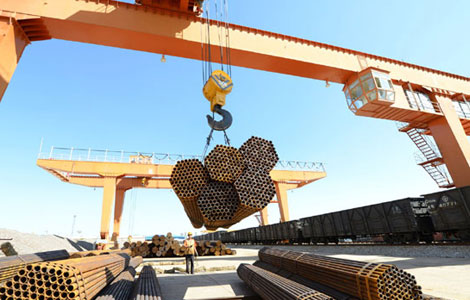
|

|

|

|

|

|
Today's Top News
China's innovation prowess looms large
US, EU concerned about stalemate in Egypt
EU to continue anti-subsidy solar probe
Nation poised to import more GMO products
Illegal Shanghai stay costs foreigner 10,000 yuan
China to be leading business travel market
Cards make paying global tuition easier
Probes not targeting foreign brands
US Weekly

|

|
